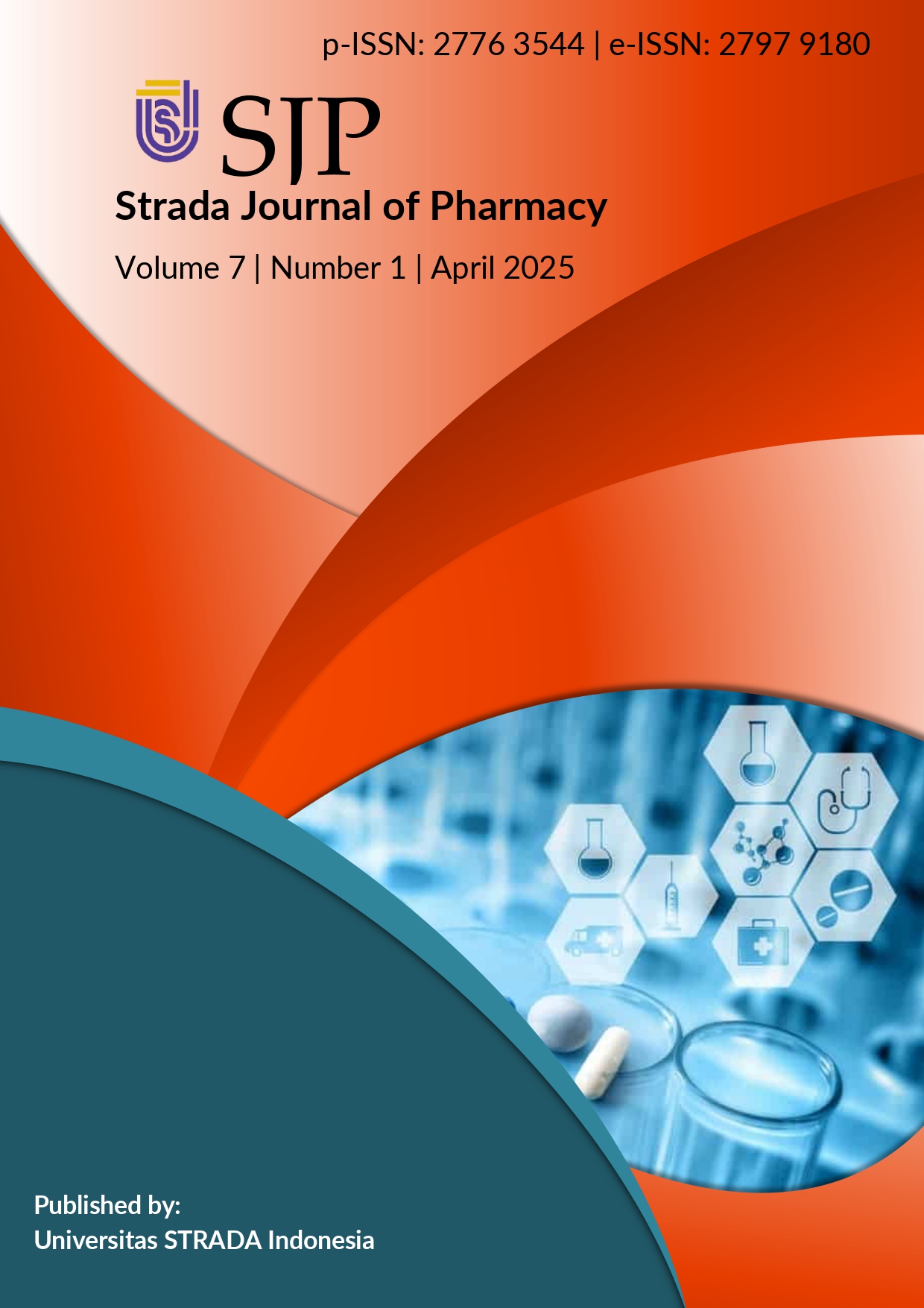The Potential of Quercetin as Parkinson's Disease Therapy Assessed From Binding Affinity To Adenosine A2a Receptor Using In-Silico
DOI:
https://doi.org/10.30994/sjp.v7i1.156Keywords:
Adenosine A2a Receptor, Istradefylline, Molecular Docking, Quercetin, ParkinsonAbstract
Parkinson's disease is a degenerative disease that causes impaired mobility and muscle control caused by decreased dopamine production in the brain. Parkinson's disease therapy is dopaminergic therapy using levodopa which works by replacing the reduced dopamine, the use of levodopa has side effects such as dizziness, nausea, and excessive sleepiness. The use of istradefylline with levodopa as a non-dopaminergic therapy in parkinson's reduces side effects and increases therapeutic targets. Quercetin is thought to have activity in improving motor function in parkinson's. The aim of this study was to look at the potential of quercetin as a parkinson's therapy. Objective: Finding the activity of quercetin as Parkinson's therapy compared with istradefylline using in-silico. Method: The design of this study is in-silico, which is a study using the help of computer calculations, the method used is molecular docking based on the principle of bonding compounds to receptors. Ligand compounds obtained from PubChem and receptor clusters obtained from Protein Data Bank. The docking Software used is Pyrex, and Discovery Studio Analizer. Independent variables in this study were quercetin and istradefylline, while the dependent variable was binding affinity ligand to adenosine A2a receptor. In this study, statistical analysis was conducted using an independent sample t-test. Results: In-silico test with molecular docking method showed each 9 ligand position to the receptor, the results of data analysis with the test of independent sample t-test, at the degree of significance α = 0.05 obtained statistical results with a significance value of 0.013 which means that the quercetin ligand has stronger potential compared to istradefylline. Quercetin has a binding affinity value of -8.1 kcal/mol, while istradefylline has a binding affinity value of -6.9 kcal / mol. Conclusion: Quercetin has been shown to have potential as an alternative therapy for parkinson's disease





